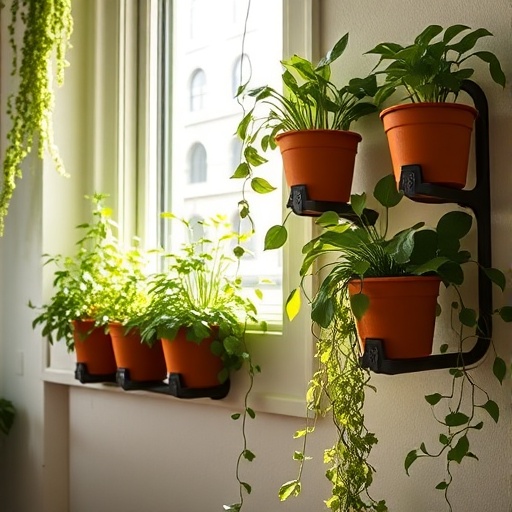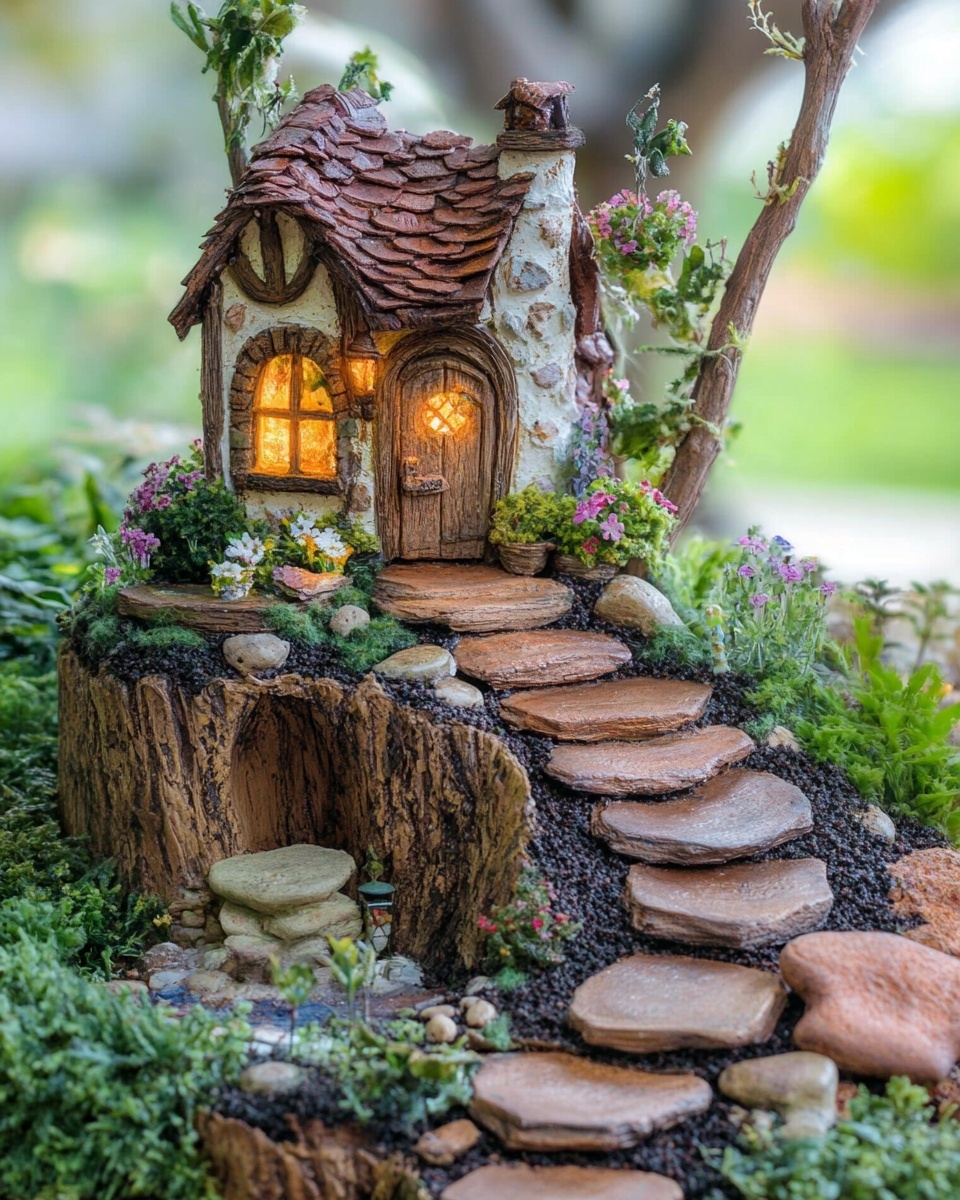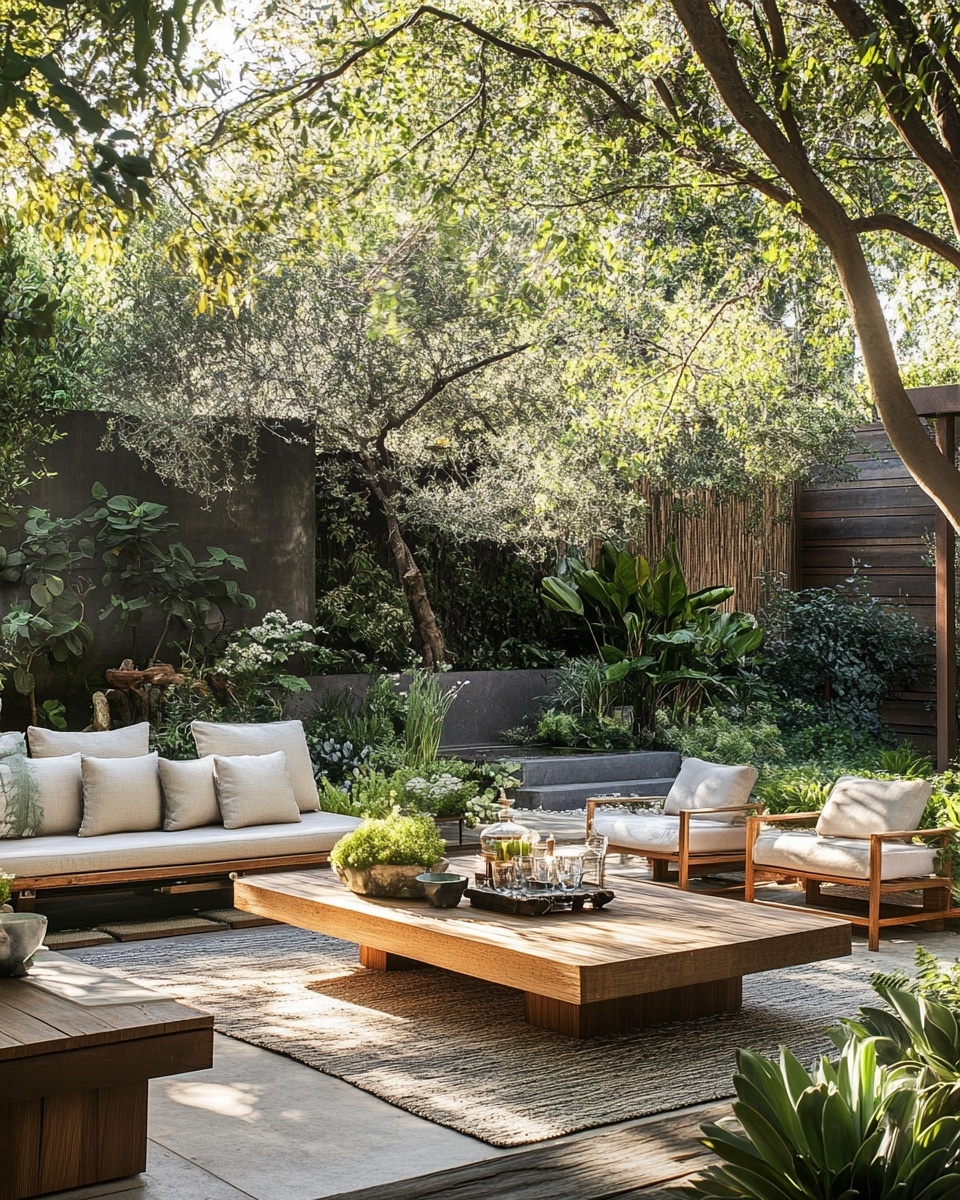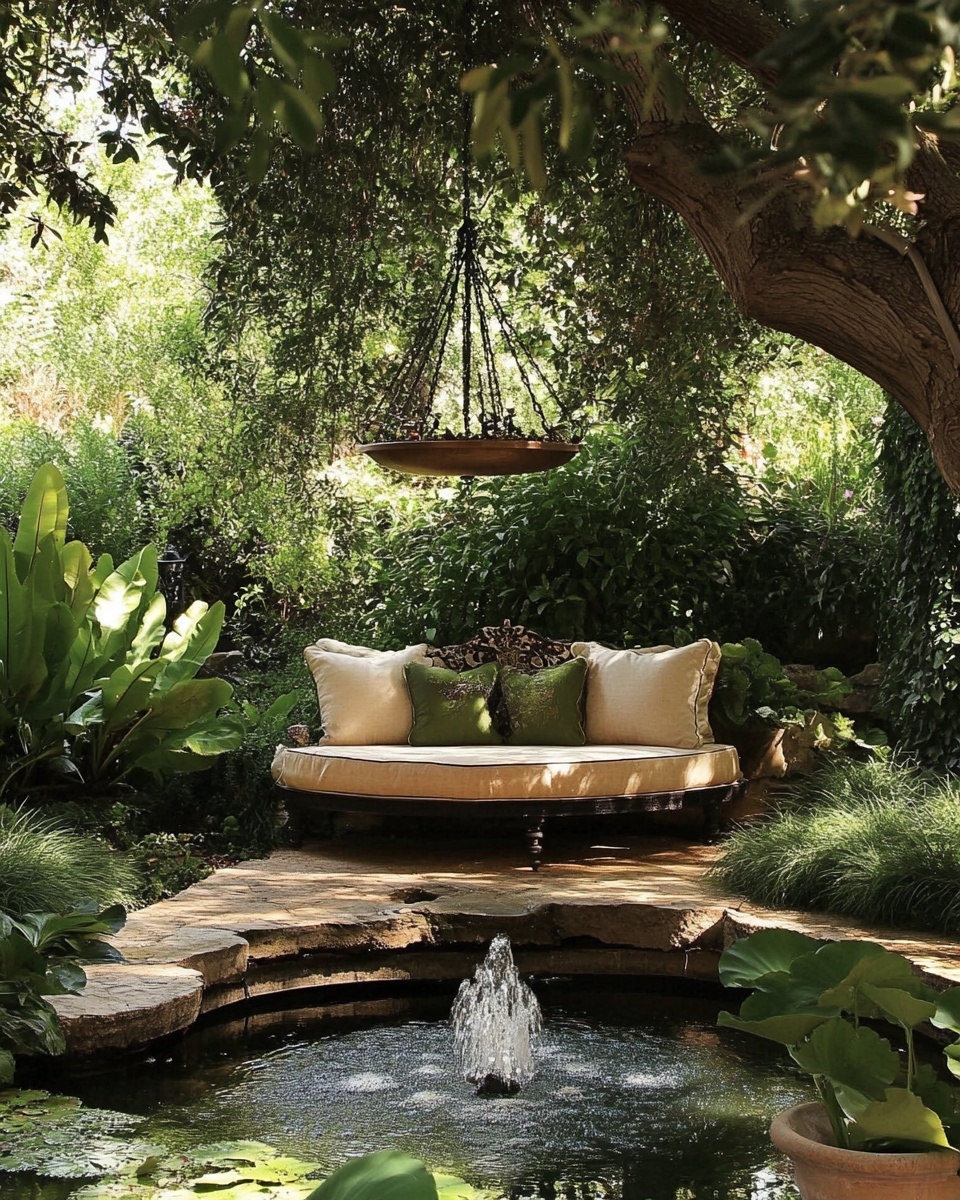Introduction
Did you know that 80% of urban dwellers crave more green space but believe they lack the room to cultivate it? This widespread misconception often deters aspiring gardeners from one of the most rewarding hobbies. But what if I told you that even the tiniest apartment or studio could transform into a flourishing oasis? With ingenious vertical indoor gardens for small spaces, this dream is not just possible, but surprisingly easy to achieve. These innovative systems harness verticality, allowing you to grow herbs, vegetables, and flowers without sacrificing precious floor area. Imagine fresh basil just steps from your kitchen, vibrant petunias brightening a dull corner, or even a mini-salad bar thriving on a wall. It’s about leveraging smart design, not sprawling acres, to bring nature inside.
Tools & Materials Needed
Embarking on your vertical indoor garden journey requires a thoughtful selection of tools and materials to ensure long-term success. Here's what you'll need, with eco-conscious options where available:
- Vertical Planter System:
- Commercial Kits: Look for stackable planters (like modular plastic pots), wall-mounted fabric pockets, or hydroponic towers. Brands like Woolly Pocket or Gardyn offer excellent ready-to-assemble options.
- DIY Alternatives: Repurpose old pallets, PVC pipes, plastic bottles (cut them carefully and horizontally), or even hanging shoe organizers into unique vertical structures. This is a budget-friendly and sustainable choice!
- Grow Lights: Crucial for indoor plants, especially if natural light is insufficient.
- LED Grow Lights: Energy-efficient and emit a full spectrum suitable for plant growth. Choose fixtures with timers for consistent light cycles.
- Budget Option: Simple fluorescent shop lights can work for leafy greens, though full-spectrum LEDs are superior for fruiting plants.
- Growing Medium:
- Potting Mix: A high-quality, well-draining organic potting mix is essential for traditional soil-based vertical gardens. Look for mixes containing perlite or vermiculite for aeration.
- Hydroponic Alternatives: If using a hydroponic system, you'll need inert media like rockwool, coco coir, or clay pebbles.
- Seeds or Seedlings:
- Organic Seeds: Opt for non-GMO, organic seeds. Consider fast-growing herbs like basil, mint, cilantro, or compact vegetables like lettuce, spinach, or cherry tomatoes.
- Young Seedlings: For a head start, purchase young plants from a local nursery.
- Small Gardening Tools:
- Hand Trowel and Cultivator: For planting and aerating soil.
- Pruning Shears: Essential for maintenance and harvesting.
- Watering Can or Sprayer: A small, long-spouted watering can is ideal for reaching upper pockets.
- Fertilizer:
- Organic Liquid Fertilizer: A balanced, all-purpose organic liquid feed is recommended. Fish emulsion or seaweed extract are excellent choices.
- Eco-Friendly Alternative: Make your own compost tea! This nutrient-rich liquid is a fantastic boost for your plants.
- Pest Control (Natural Options):
- Neem Oil: A natural insecticide and fungicide.
- Insecticidal Soap: Effective against soft-bodied pests.
- Beneficial Insects: For larger setups, consider releasing ladybugs for aphid control.
Time & Effort Overview
Setting up vertical indoor gardens for small spaces is surprisingly efficient. Initial setup can take anywhere from 1-3 hours, depending on the complexity of your chosen system (DIY vs. pre-made kit).
- Planting: 30 minutes to 1 hour per module.
- Daily Maintenance: 5-10 minutes (checking moisture, light, general health).
- Weekly Maintenance: 15-30 minutes (watering, fertilizing, light pruning).
- Harvesting: As needed, often daily for leafy greens and herbs.
Compared to a traditional outdoor garden, indoor vertical gardens often yield harvests 20-30% faster due to controlled environments and optimized light exposure. Most projects are beginner-friendly, especially those utilizing soil-based pocket systems. Hydroponic setups might be intermediate due to nutrient monitoring, but many modern systems simplify this process.
Step-by-Step Gardening Process
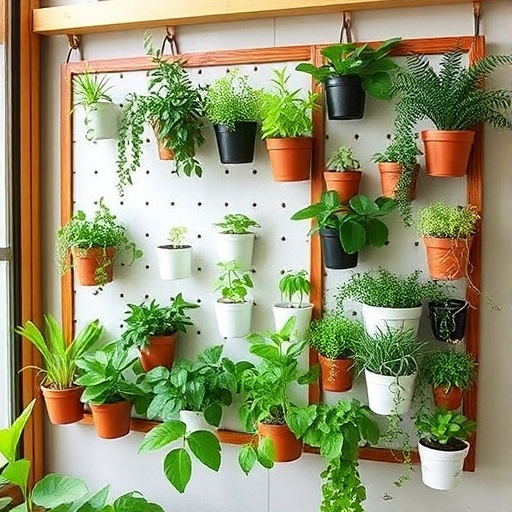
Ready to transform your small space? Here’s a clear, concise guide to setting up your vertical indoor garden system.
Choose Your Vertical Garden System
First, select the right frame for your green ambitions. Consider wall-mounted pockets for herbs, tiered planters for strawberries, or a sleek hydroponic tower for varied greens. Think about space, budget, and the types of plants you want to grow. Fabric pockets are forgiving and lightweight, while more structured systems offer better stability for larger plants.
Prepare Your Growing Medium
If using soil, fill your chosen system’s containers with a high-quality organic potting mix, leaving about an inch of space from the top. For hydroponics, place your inert media (rockwool, coco coir) into the net pots or designated slots. Ensure the medium is lightly moistened before planting.
Plant Your Seeds or Seedlings
Gently create small depressions in the soil for seeds, following package instructions for depth and spacing. For seedlings, carefully remove them from their nursery pots, loosen any circling roots, and plant them into your vertical system. Press the soil gently around the base. Don’t worry if some plants look a little droopy right after transplanting; they usually perk up after a good initial watering.
Install Grow Lights (if needed)
Position your LED grow lights directly above your plants. For most plants, aim for 12-16 hours of light per day. Use a timer to automate this cycle for consistency. The distance between the light and your plants is crucial; typically, 6-12 inches is ideal for seedlings, while mature plants might tolerate a bit more distance. Adjust if you see stretching (plants reaching too far for light) or scorching (yellowing/browning leaves from too much intensity).
Initial Watering
Water your newly planted garden thoroughly until water drains from the bottom (for soil systems). For hydroponic systems, ensure your reservoir is filled with the appropriate nutrient solution. This initial watering helps settle the soil around the roots and kickstarts growth.
Monitor and Adjust
Now, the ongoing care begins! Check your plants daily for moisture levels, pest signs, and healthy growth. Adjust light timers, watering frequency, and nutrient solutions as needed. Here’s how to fix common issues: if leaves are yellowing, it could be nutrient deficiency or overwatering. If they're browning, it might be underwatering or light burn. Small, consistent adjustments will lead to big results.
Growth & Care Tips
Consistent care is the backbone of a thriving vertical indoor garden.
- Watering Frequency: This is paramount. Soil-based vertical indoor gardens for small spaces dry out faster than traditional pots due to increased air circulation. Check the top inch of soil daily; water when it feels dry. Hydroponic systems require regular reservoir top-offs and nutrient solution changes (typically every 1-2 weeks). Overwatering causes root rot in over 60% of indoor plant failures, so always check before you pour!
- Sunlight Exposure: Most herbs and vegetables need 12-16 hours of light per day. If natural light isn't enough, supplementary grow lights are essential. Position them 6-12 inches above plant tops and adjust as plants grow.
- Pruning: Regular pruning encourages bushier growth and higher yields. "Pinch back" herbs like basil and mint by removing the top two sets of leaves just above a node. For fruiting plants, remove any yellowing or dead leaves. This redirects energy to new growth and fruit production.
- Fertilization: Indoor plants quickly deplete soil nutrients. For soil-based systems, apply a diluted liquid organic fertilizer every 2-4 weeks during the growing season. Hydroponic systems require a balanced nutrient solution specifically designed for hydroponics. Always follow product instructions carefully.
- Pest Prevention: Vigilance is key. Inspect plants weekly for signs of pests like aphids, spider mites, or fungus gnats. A homemade solution of mild soap and water can often deter early infestations. Introduce beneficial insects like ladybugs if the problem persists (for larger setups). Maintaining good air circulation also drastically reduces pest and disease issues.
Eco-Friendly & Sustainable Alternatives
Make your vertical indoor gardens for small spaces even greener with these sustainable practices:
- Composting: Turn kitchen scraps into nutrient-rich compost tea for your plants. A small countertop composter is perfect for apartment living.
- Rainwater Harvesting: Collect rainwater (if feasible) to water your plants. It's naturally soft and free of chlorine found in tap water.
- DIY Planters: Repurpose materials like plastic bottles, old tires (check for leaching concerns), or shipping pallets into unique and functional vertical planters.
- Native & Drought-Tolerant Plants: While primarily for outdoor use, understanding these principles helps in plant selection. For example, some herbs like rosemary and thyme are quite drought-tolerant.
- Upcycled Materials: Old shelving units, disused ladders, or even shoe organizers can be transformed into creative vertical indoor gardens for small spaces, reducing waste and saving money.
- Water Conservation: Implement drip irrigation systems or self-watering planters to minimize water waste. Group plants with similar water needs together to optimize watering schedules.
Creative Ideas & Uses
Don't just grow plants; make your vertical garden a statement piece!
- Aesthetic Combinations: Mix edible herbs with small ornamental plants like creeping fig or air plants for visual appeal. Consider contrasting foliage colors and textures to create a living work of art.
- Repurposing Materials: Paint old metal cans in vibrant colors and hang them on a pegboard for a rustic-chic herb wall. Use an old step ladder as a tiered plant stand, placing different plants on each rung.
- Design & Decor: Use your vertical garden as a natural room divider in an open-plan living space. Install LED strip lights around the frame of your vertical garden for an enchanting nighttime glow. Integrate your vertical garden into your kitchen backsplash area for easy access to fresh ingredients.
- Themed Gardens: Create a "pizza garden" with basil, oregano, and cherry tomatoes, or a "tea garden" with mint, chamomile, and lemon balm. For inspiration, explore visual ideas on platforms like Pinterest.
- Aromatic Walls: Place fragrant herbs like lavender or rosemary near entryways or seating areas to provide a natural, pleasant aroma.
Common Mistakes to Avoid
Even experienced gardeners encounter challenges. Knowing these common pitfalls can save you time and frustration with your vertical indoor gardens for small spaces.
- Underestimating Light Needs: Many beginners assume indirect light is sufficient indoors. However, most herbs and vegetables require intense, direct light. Insufficient light is the leading cause of leggy, pale growth, affecting 70% of indoor plant struggles. Invest in proper grow lights if natural light is sub-optimal.
- Overwatering: As mentioned, overwatering can cause root rot, killing plants quickly. Always check soil moisture before watering. It's better to underwater slightly than to overwater.
- Neglecting Drainage: Without proper drainage holes in your vertical planters, water accumulates, leading to soggy soil and root issues. Ensure every container has drainage, even if it's a DIY project.
- Lack of Air Circulation: Stagnant air encourages fungal diseases and pests. Ensure good ventilation, especially in humid indoor environments. A small fan can work wonders.
- Using Garden Soil: Outdoor garden soil is too dense for containers and can introduce pests and diseases indoors. Always use a sterile, well-draining potting mix or appropriate hydroponic medium.
- Ignoring Fertilization: Indoor plants use up nutrients quickly. Fertilize regularly with a balanced product to prevent nutrient deficiencies, which often manifest as yellowing leaves or stunted growth.
- Overcrowding: While you want a lush garden, giving plants adequate space is crucial. Overcrowding leads to competition for light, water, and nutrients, and can increase disease susceptibility.
Maintenance & Storage Tips
Long-term success with your vertical indoor gardens for small spaces requires ongoing maintenance and strategic planning.
- Long-term Plant Health: Routinely inspect for pests and diseases. Wipe down leaves with a damp cloth to remove dust and improve light absorption. Rotate plants occasionally to ensure even light exposure.
- Seasonal Care: While indoor gardens aren't as affected by seasons, you might notice slower growth in winter due to shorter days, even with grow lights. Adjust watering frequency accordingly. Consider giving plants a brief "rest" period if growth slows significantly.
- Seed Storage: If you're saving seeds, store them in a cool, dark, dry place in airtight containers. Label them clearly with the date. Proper storage can keep seeds viable for years, often reducing their germination rate by only 10-20% per year.
- Addressing Common Issues:
- Yellow Leaves: Could be overwatering, nutrient deficiency, or insufficient light. Assess all three.
- Poor Soil Drainage: If water sits on the surface, repot with fresh, well-draining soil mixed with perlite or consider adding more drainage holes to your container.
- Leggy Growth: Your plants are stretching for light. Move grow lights closer or extend light duration.
- Wilting: Usually underwatering, but can also be severe overwatering. Check soil moisture deeply.
Conclusion
Embracing vertical indoor gardens for small spaces is more than just a trend; it's a practical and rewarding way to integrate nature into modern living, regardless of your square footage. From boosting air quality and providing fresh produce to enhancing your home's aesthetics, the benefits are immense. We've explored everything from selecting the right system and essential tools to detailed care instructions and common mistakes to avoid. Remember, gardening is a journey of learning and discovery. Don't be afraid to experiment, observe your plants, and enjoy the process. Your small space holds boundless potential for growth and greenery.
Are you ready to create your own flourishing vertical oasis? Share your garden plans or initial photos with us in the comments! Let's cultivate a greener, healthier community, one vertical garden at a time.
FAQ
Q1: What are the best plants for vertical indoor gardens for small spaces?
A1: Leafy greens like lettuce, spinach, and kale thrive. Herbs such as basil, mint, chives, and oregano are excellent choices. Compact vegetables like cherry tomatoes, strawberries, and small peppers can also succeed with adequate light.
Q2: How much light do vertical indoor gardens need?
A2: Most edible plants in vertical indoor gardens for small spaces require 12-16 hours of bright, direct light daily. If natural light isn't available, full-spectrum LED grow lights are crucial for healthy growth.
Q3: Can I use regular potting soil in my vertical indoor garden?
A3: Yes, a high-quality, well-draining organic potting mix is excellent for soil-based vertical systems. Avoid heavy garden soil, which can compact and impede root growth in containers, leading to issues in 9 out of 10 cases.
Q4: How often should I water my vertical indoor garden?
A4: Watering frequency depends on your plant type, environment, and system. Generally, check the top inch of soil daily; water when it feels dry. Hydroponic systems require regular monitoring and refilling of the nutrient reservoir.
Q5: Are vertical indoor gardens difficult for beginners?
A5: Not at all! Many soil-based vertical systems, especially fabric pocket planters, are very beginner-friendly. Hydroponic systems can have a slightly steeper learning curve but are manageable with modern kits designed for ease of use.
Q6: How do I prevent pests in my vertical indoor garden?
A6: Good air circulation, regular plant inspection, and maintaining plant health are key. Use natural pest controls like neem oil or insecticidal soap at the first sign of trouble. Proper watering also helps prevent fungus gnats.
Q7: How can I fertilize plants in a vertical indoor garden?
A7: For soil-based systems, use a dilute liquid organic fertilizer every 2-4 weeks. For hydroponic systems, a balanced hydroponic nutrient solution is continuously supplied through the water. Follow product instructions carefully.
For more innovative gardening solutions, check out some of our other guides and articles:
- Looking to keep your plants happy during colder months? Learn all about "Greenhouse Gardening in Winter: How to Keep Plants Warm".
- If you're interested in compact plant systems, explore "DIY Mini Greenhouse Ideas for Home Gardeners" for creative inspiration.
- To discover more about what vegetables thrive in controlled environments, read up on the "Best Vegetables to Grow in a Greenhouse".
- Thinking about starting with herbs? Our guide on "10 Easy Herbs to Grow Indoors" offers fantastic tips for beginners.
- And if you're keen on general indoor plant care, make sure to visit "Best Houseplants for Beginners" for practical advice.
